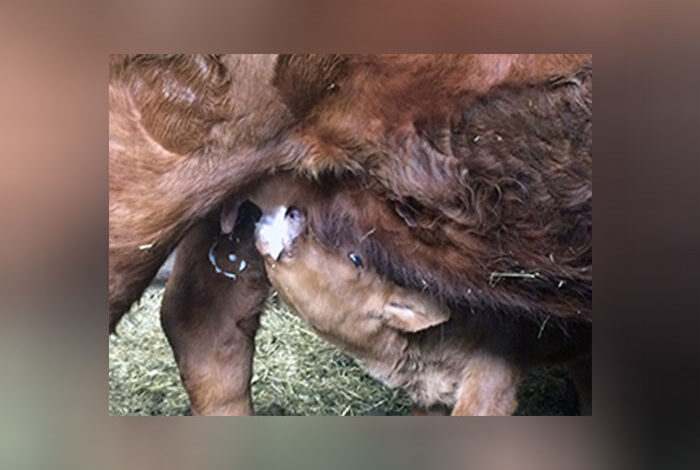
Milk Fever or Winter Tetany?
By Jenifer Heyden, PAg, Livestock and Feed Extension Specialist, North Battleford
In years of low moisture, feed quantity and quality can be compromised. Problems have been observed throughout Western Canada with cows going down prior to or shortly after calving; a prolonged negative energy balance, hypomagnesemia, an inadequate calcium-to-phosphorus ratio or an inadequate balance of dietary cations to anions can all lead to downer cows. In low-moisture years, cows are often fed greenfeed, salvaged cereal crops and straw/grain rations. These types of rations tend to be low in calcium and magnesium and high in potassium, which may create a predisposition to milk fever and/or winter tetany.
Winter tetany occurs in wintertime when cows are fed harvested forage. Excluding legumes, harvested forages tend to be low in magnesium and often require supplementation. Feeding a legume-based hay may help alleviate the problem, but it is not an immediate fix. Forages with a magnesium level below 0.18 per cent predispose animals to winter tetany.
Mature animals are more susceptible to winter tetany, due to their inability to mobilize magnesium from their bones to meet requirements. This is critical during lactation and a greater number of animals may go down as peak lactation nears. Cows with young calves (less than four months of age) and heavy milking cows are the most susceptible to tetany. Cows that develop tetany are prone to do so again.
Symptoms of tetany may start as nervousness and flightiness. Affected animals may avoid the rest of the herd, have a stiff gait, reduced feed intake and urinate frequently. As tetany progresses, the cows may stagger and there may be twitching on the flanks, ears and face. Animals may lie down and get up frequently, as well as become irritable and aggressive. As the syndrome progresses animals go down on their sides and they are often seen with their forelegs pedaling frequently. They may excessively salivate or grind their teeth. Eventually violent convulsions develop. The time between the first symptoms and death can be as short as four to eight hours – so treatment is imperative.
Low calcium and high potassium in the feed can exacerbate the issue of tetany and may also lead to milk fever. Non-legume forages can be high in potassium, while calcium and magnesium levels are often low. Dry growing conditions and low soil pH also contribute to potassium accumulation in plants, and high levels of potassium can inhibit the absorption of calcium and magnesium. When high potassium levels are present, calcium mobilization from bone becomes inefficient and the potential for milk fever increases.
Symptoms of milk fever are similar to winter tetany, but affected animals are usually more lethargic. Again, older cows are more susceptible than young cows and heifers because of lower calcium stores and decreased absorption efficiency.
Milk fever and winter tetany are most prevalent approximately three weeks prior to calving and into the early stages of lactation. Animals may have both a calcium and magnesium deficiency, so it is important to ensure the cows are receiving adequate and balanced levels of both. A feed analysis will indicate the levels of nutrients and minerals in the forages being fed. Based on the results of the feed tests, proper mineral and vitamin supplementation can be provided.
In herds where milk fever and winter tetany have been identified, adding three ounces of limestone and one to one-and-a-half ounces of magnesium oxide per cow per day to the ration has often prevented, reduced or eliminated the problem. If you are feeding a ration that calls for eight or more pounds of grain or pellets per cow per day, you should split feed, whereby half the concentrate is fed in the morning and the other half in the afternoon. Feeding a high amount of concentrate at one feeding can cause acidosis, which in turn impairs the absorption of many minerals, including calcium and magnesium. In addition, you must ensure that calcium, magnesium and phosphorus levels are properly balanced in the ration.
Producers should contact their veterinarian if cows exhibit signs of winter tetany or milk fever.








































